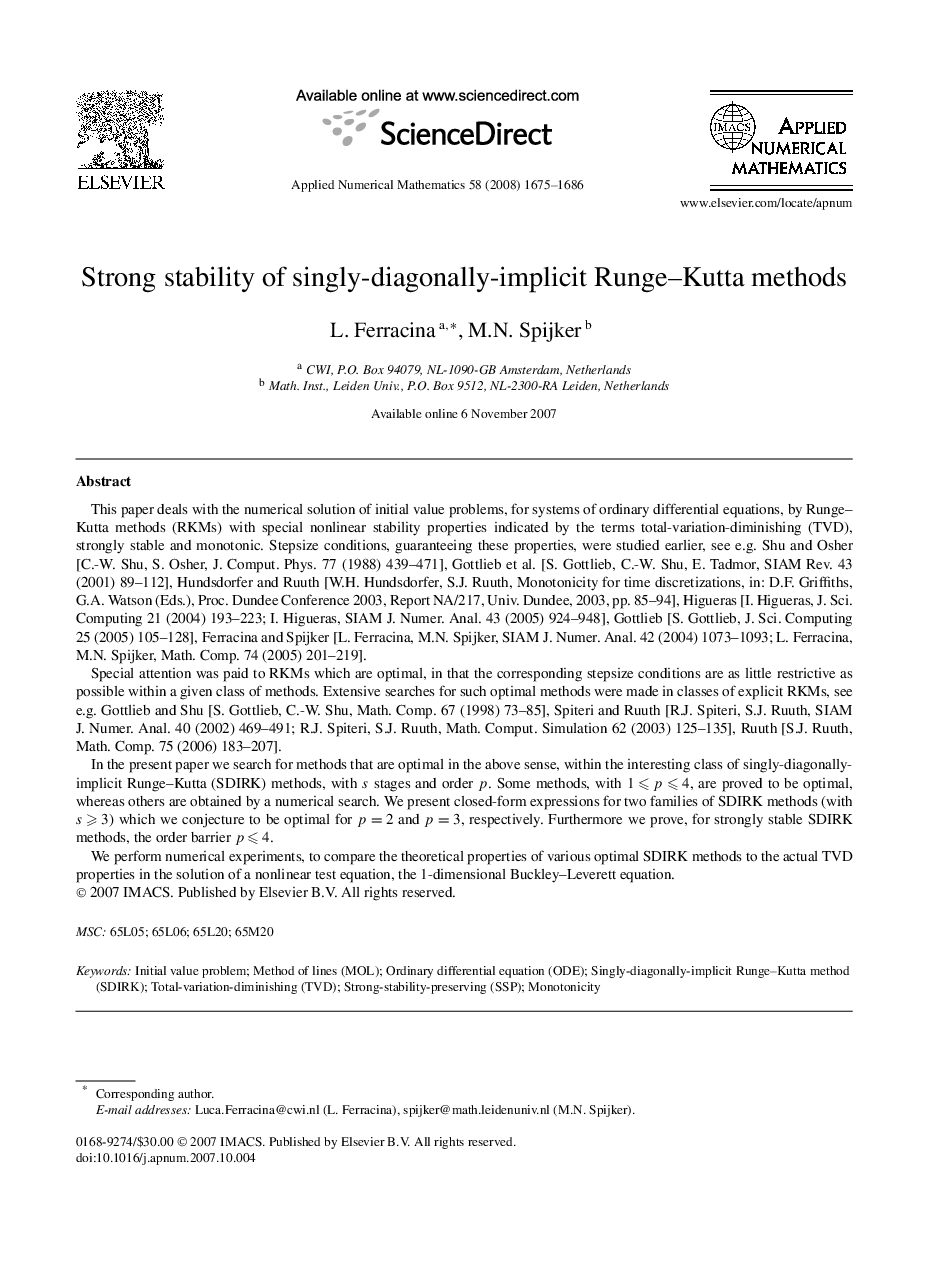| کد مقاله | کد نشریه | سال انتشار | مقاله انگلیسی | نسخه تمام متن |
|---|---|---|---|---|
| 4645802 | 1342064 | 2008 | 12 صفحه PDF | دانلود رایگان |

This paper deals with the numerical solution of initial value problems, for systems of ordinary differential equations, by Runge–Kutta methods (RKMs) with special nonlinear stability properties indicated by the terms total-variation-diminishing (TVD), strongly stable and monotonic. Stepsize conditions, guaranteeing these properties, were studied earlier, see e.g. Shu and Osher [C.-W. Shu, S. Osher, J. Comput. Phys. 77 (1988) 439–471], Gottlieb et al. [S. Gottlieb, C.-W. Shu, E. Tadmor, SIAM Rev. 43 (2001) 89–112], Hundsdorfer and Ruuth [W.H. Hundsdorfer, S.J. Ruuth, Monotonicity for time discretizations, in: D.F. Griffiths, G.A. Watson (Eds.), Proc. Dundee Conference 2003, Report NA/217, Univ. Dundee, 2003, pp. 85–94], Higueras [I. Higueras, J. Sci. Computing 21 (2004) 193–223; I. Higueras, SIAM J. Numer. Anal. 43 (2005) 924–948], Gottlieb [S. Gottlieb, J. Sci. Computing 25 (2005) 105–128], Ferracina and Spijker [L. Ferracina, M.N. Spijker, SIAM J. Numer. Anal. 42 (2004) 1073–1093; L. Ferracina, M.N. Spijker, Math. Comp. 74 (2005) 201–219].Special attention was paid to RKMs which are optimal, in that the corresponding stepsize conditions are as little restrictive as possible within a given class of methods. Extensive searches for such optimal methods were made in classes of explicit RKMs, see e.g. Gottlieb and Shu [S. Gottlieb, C.-W. Shu, Math. Comp. 67 (1998) 73–85], Spiteri and Ruuth [R.J. Spiteri, S.J. Ruuth, SIAM J. Numer. Anal. 40 (2002) 469–491; R.J. Spiteri, S.J. Ruuth, Math. Comput. Simulation 62 (2003) 125–135], Ruuth [S.J. Ruuth, Math. Comp. 75 (2006) 183–207].In the present paper we search for methods that are optimal in the above sense, within the interesting class of singly-diagonally-implicit Runge–Kutta (SDIRK) methods, with s stages and order p. Some methods, with 1⩽p⩽4, are proved to be optimal, whereas others are obtained by a numerical search. We present closed-form expressions for two families of SDIRK methods (with s⩾3) which we conjecture to be optimal for p=2 and p=3, respectively. Furthermore we prove, for strongly stable SDIRK methods, the order barrier p⩽4.We perform numerical experiments, to compare the theoretical properties of various optimal SDIRK methods to the actual TVD properties in the solution of a nonlinear test equation, the 1-dimensional Buckley–Leverett equation.
Journal: Applied Numerical Mathematics - Volume 58, Issue 11, November 2008, Pages 1675-1686